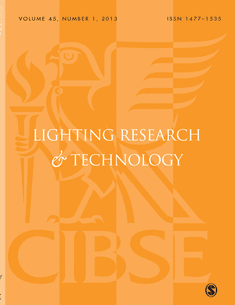
Lighting Research & Technology
Scope & Guideline
Elevating Standards in Lighting Technology
Introduction
Aims and Scopes
- Human-Centric Lighting Research:
The journal emphasizes studies that investigate the impact of lighting on human health, mood, and performance. This includes research on circadian rhythms, sleep quality, and psychological responses to different lighting conditions. - Lighting Design and Technology Innovations:
A core focus is on the development and evaluation of innovative lighting technologies and design methodologies, including the use of LEDs, smart lighting systems, and sustainable practices in lighting design. - Environmental and Road Lighting Applications:
Research related to the application of lighting in outdoor environments, particularly road lighting and its effects on pedestrian safety and traffic dynamics, is a significant area of study. - Measurement and Modelling of Light:
The journal publishes works that contribute to methodologies for measuring light and its effects, including light dosimetry, spectral analysis, and the development of predictive models for lighting performance. - Interdisciplinary Approaches:
The journal encourages interdisciplinary research that links lighting with other fields such as architecture, urban planning, health sciences, and environmental psychology, promoting a holistic understanding of lighting's role.
Trending and Emerging
- Impact of Lighting on Health and Wellbeing:
Recent publications highlight the increasing interest in how various lighting conditions affect human health, particularly in relation to circadian rhythms, sleep quality, and psychological well-being. - Smart and Adaptive Lighting Systems:
Research into smart lighting technologies, including IoT-integrated systems and adaptive lighting solutions that respond to environmental conditions and user needs, is on the rise, reflecting advancements in technology. - Sustainability and Energy Efficiency:
A growing emphasis on sustainable lighting practices and energy-efficient technologies, particularly in urban settings, is evident, with a focus on reducing light pollution and optimizing energy consumption. - Interdisciplinary Research Approaches:
There is an emerging trend towards interdisciplinary studies that connect lighting research with environmental psychology, urban planning, and health sciences, indicating a broader recognition of lighting's impact. - Temporal Light Modulation (TLM) Studies:
Increased attention is being paid to the effects of temporal light modulation on visual performance and health, suggesting a burgeoning field of study that explores how light timing and intensity influence human behavior.
Declining or Waning
- Traditional Lighting Technologies:
Research on conventional lighting technologies, such as incandescent and fluorescent lighting, appears to be decreasing as the focus shifts towards LED technologies and smart lighting solutions. - Basic Photometric Studies:
Studies focusing solely on basic photometric measurements without contextual applications are becoming less prominent, as researchers are increasingly linking measurements to practical implications for human health and safety. - Static Lighting Design Principles:
There is a noticeable reduction in studies that advocate for static lighting design principles without considering dynamic or adaptable lighting solutions, reflecting a broader trend towards responsive and human-centric lighting systems. - General Theoretical Discussions:
The journal has seen fewer publications centered on theoretical discussions of lighting concepts without empirical data, indicating a preference for research grounded in practical applications and real-world testing.
Similar Journals
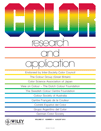
COLOR RESEARCH AND APPLICATION
Connecting Color Theory to Practical Solutions.COLOR RESEARCH AND APPLICATION is an esteemed journal dedicated to the exploration of color science, including its applications in various fields such as chemistry, human factors, and ergonomics. Published by WILEY, this journal has been a vital resource for both researchers and professionals since its inception in 1976, with a commitment to disseminating cutting-edge research and innovative methodologies. With an impact factor that reflects its significance in the academic community, COLOR RESEARCH AND APPLICATION ranks in the Q2 quartile across multiple categories, including Chemical Engineering, General Chemistry, and Human Factors and Ergonomics, illustrating its interdisciplinary importance. As a premier publication, it serves to bridge the gap between theoretical developments and practical applications of color science, thereby catering to a diverse readership that includes students, industry practitioners, and esteemed researchers. The journal offers a wealth of articles that not only enrich the understanding of color but also contribute to advancements in technology and human experience, ensuring its pivotal role in shaping future developments in the field.

AIRCRAFT ENGINEERING AND AEROSPACE TECHNOLOGY
Exploring the future of aircraft design and maintenance.AIRCRAFT ENGINEERING AND AEROSPACE TECHNOLOGY, published by Emerald Group Publishing Ltd, is a leading peer-reviewed journal dedicated to advancing the fields of aerospace engineering and technology. With a strong emphasis on innovative research, the journal aims to bridge theoretical developments and practical applications within the aerospace sector. Although the journal does not currently offer open access, it continues to enrich the academic community's understanding of aircraft design, maintenance, and engineering processes, making it a crucial resource for researchers, professionals, and students alike. By fostering a rigorous dialogue among experts, AIRCRAFT ENGINEERING AND AEROSPACE TECHNOLOGY ensures the dissemination of cutting-edge findings and promotes sustainable practices in the aerospace industry, highlighted by its commitment to high-quality scholarship.
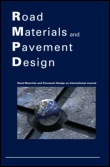
Road Materials and Pavement Design
Transforming Road Construction with Groundbreaking ResearchRoad Materials and Pavement Design, published by Taylor & Francis Ltd, is a premier journal in the field of civil and structural engineering, with a focus on the innovative materials and design methodologies that shape modern roadway infrastructure. Boasting an impressive impact factor and ranking in the Q1 category for civil engineering as of 2023, this journal stands at the forefront of academic research, ranking 49th out of 379 in its category with a commendable 87th percentile in Scopus. Since its inception in 2000, it has provided a vital platform for disseminating groundbreaking research, fostering collaboration, and advancing knowledge in road construction and pavement technology. Ideal for researchers, professionals, and students alike, this journal offers a comprehensive range of articles, reviews, and case studies that address contemporary challenges and developments in the field. Although it does not offer open access, the journal's commitment to quality and rigor ensures that it remains a crucial resource for anyone seeking to deepen their understanding of road materials and pavement design.
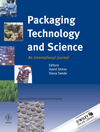
PACKAGING TECHNOLOGY AND SCIENCE
Fostering Interdisciplinary Insights for a Greener TomorrowPACKAGING TECHNOLOGY AND SCIENCE, published by Wiley, is a leading journal in the fields of packaging technology, materials science, and mechanical engineering. With a dedicated focus on innovative research and advancements in packaging materials and methodologies, the journal has made significant contributions since its inception in 1988. It holds a distinguished position as a Q2 journal in multiple disciplines, including Chemistry, Materials Science, and Mechanical Engineering, reflecting its high impact and scholarly influence. Although not an Open Access publication, it reaches a broad audience through its rigorous peer-review process and commitment to disseminating critical findings in packaging research. Researchers, professionals, and students alike benefit from the journal’s rich content that encourages interdisciplinary collaboration and the exploration of sustainable packaging solutions. For those seeking to remain at the forefront of packaging technology and science, this journal serves as an essential resource for fostering innovation and addressing the evolving challenges within the industry.

JOURNAL OF SLEEP RESEARCH
Transforming Sleep Science into Clinical Insights.JOURNAL OF SLEEP RESEARCH, published by Wiley, stands as a leading platform for disseminating innovative research and insights in the fields of sleep science, behavioral neuroscience, and cognitive neuroscience. With a commendable Impact Factor that reflects its pivotal role in advancing our understanding of sleep and associated neurological processes, this journal ranks in the top quartile (Q1) across multiple categories in 2023—demonstrating its substantial influence and outreach. The journal's dedicated focus spans various aspects of sleep research, from basic science to clinical applications, making it an invaluable resource for researchers, clinicians, and students alike. Operating from the United Kingdom, the journal has been in continuous circulation since 1992 and will continue to contribute to the field until at least 2024. For those seeking to enrich their knowledge and stay abreast of the latest advancements in sleep research, the JOURNAL OF SLEEP RESEARCH is an essential read.
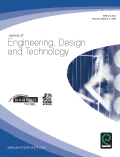
Journal of Engineering Design and Technology
Elevating Engineering Practices to New HeightsJournal of Engineering Design and Technology, published by Emerald Group Publishing Ltd, is a prominent platform in the field of engineering, specializing in design and technology innovations. With an ISSN of 1726-0531, this journal has made significant contributions to the body of knowledge since its inception in 2005, offering rigorous peer-reviewed articles that cover a diverse range of topics from conceptual design to advanced engineering practices. As a Q2 journal in Engineering (miscellaneous), it stands out in the Scopus Rankings with a commendable position at #44 out of 307 and an impressive 85th percentile, reflecting its substantial impact in the engineering community. While currently not categorized as Open Access, the journal continues to pursue accessibility and engagement for researchers, professionals, and students alike, ensuring that influential research is disseminated effectively. As it converges towards 2024, the Journal of Engineering Design and Technology remains an essential resource for those advancing the scope of engineering innovations and technology-driven solutions.

Clocks & Sleep
Fostering Global Dialogue on Sleep and Its MysteriesClocks & Sleep is an esteemed open access journal published by MDPI, dedicated to advancing the understanding of sleep-related phenomena through a multidisciplinary lens. Since its inception in 2019, the journal has progressively emerged as a vital resource in the fields of Neurology and Neuroscience, achieving a respectable ranking in the third quartile (Q3) among its peers according to the 2023 category quartiles. The journal's commitment to disseminating high-quality research is reflected in its Scopus rankings, placing it in the 58th percentile for Neuroscience and the 50th percentile for Neurology. Based in Switzerland, Clocks & Sleep promotes a global dialogue through its open access model, enabling researchers, professionals, and students to engage with cutting-edge findings and contribute to the growing body of literature on sleep science. With a focus on interdisciplinary studies that intersect with psychology, psychiatry, and circadian rhythms, Clocks & Sleep is poised to shape the future of sleep research.
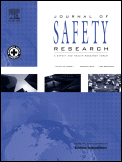
JOURNAL OF SAFETY RESEARCH
Pioneering research for enhanced safety outcomes.The JOURNAL OF SAFETY RESEARCH, published by Pergamon-Elsevier Science Ltd, stands as a premier platform for scholarly discourse within the domain of safety, risk, reliability, and quality. With an esteemed impact factor and a strong ranking of #38 out of 207 in its category as per Scopus, this journal maintains a distinguished Q1 quartile status, reflecting its influence and significance in advancing safety research since its inception in 1969. Researchers, practitioners, and students alike will find a wealth of knowledge here as the journal explores critical aspects of safety in various contexts, highlighting innovative strategies and empirical findings that contribute to improved safety outcomes globally. Though it operates under a traditional access format, the journal’s extensive repository of articles ensures that vital information remains accessible to its readership. The JOURNAL OF SAFETY RESEARCH is not only a cornerstone for those within the safety engineering field, but also a vital resource for professionals seeking to enhance their understanding of risk management and quality assurance methodologies.
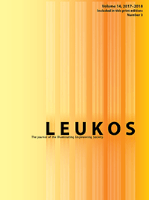
Leukos
Shaping the Future of Atomic Physics Through Rigorous InquiryLeukos is a premier academic journal published by Taylor & Francis Inc, dedicated to advancing the field of atomic and molecular physics and optics. With an impressive Q1 ranking in the 2023 category of Atomic and Molecular Physics and Optics, and a notable position of Rank #45 out of 224 on the Scopus rankings, this journal serves as a vital resource for researchers, professionals, and students alike. Since its inception in 2004, Leukos has provided a platform for cutting-edge research, reviews, and discussions that delve into the complexities and innovations in light sciences. Although it is not currently an open-access journal, its rigorous peer-review process ensures that published works meet the highest standards of scientific integrity. As a part of the esteemed Taylor & Francis portfolio, Leukos continues to be at the forefront of its discipline, encouraging interdisciplinary collaboration and fostering new ideas that shape our understanding of light and its interactions.

Korean Journal of Optics and Photonics
Illuminating the Future of Light ScienceKorean Journal of Optics and Photonics is a premier publication dedicated to advancing knowledge in the rapidly evolving fields of optics and photonics. Published by the esteemed Optical Society of Korea, this journal serves as a vital platform for researchers, professionals, and students seeking to disseminate their findings and innovations in areas such as optical engineering, photonics technologies, and application developments. Although the journal does not operate under an Open Access model, it is committed to high-quality peer-reviewed research that contributes significantly to both theoretical and practical advancements in the field. With an increasing focus on interdisciplinary research, the Korean Journal of Optics and Photonics is poised to play a crucial role in fostering collaboration and driving the global conversation on light science and technology. The journal's ISSN is 1225-6285 and it also carries the E-ISSN 2287-321X, ensuring its availability to a wide readership.